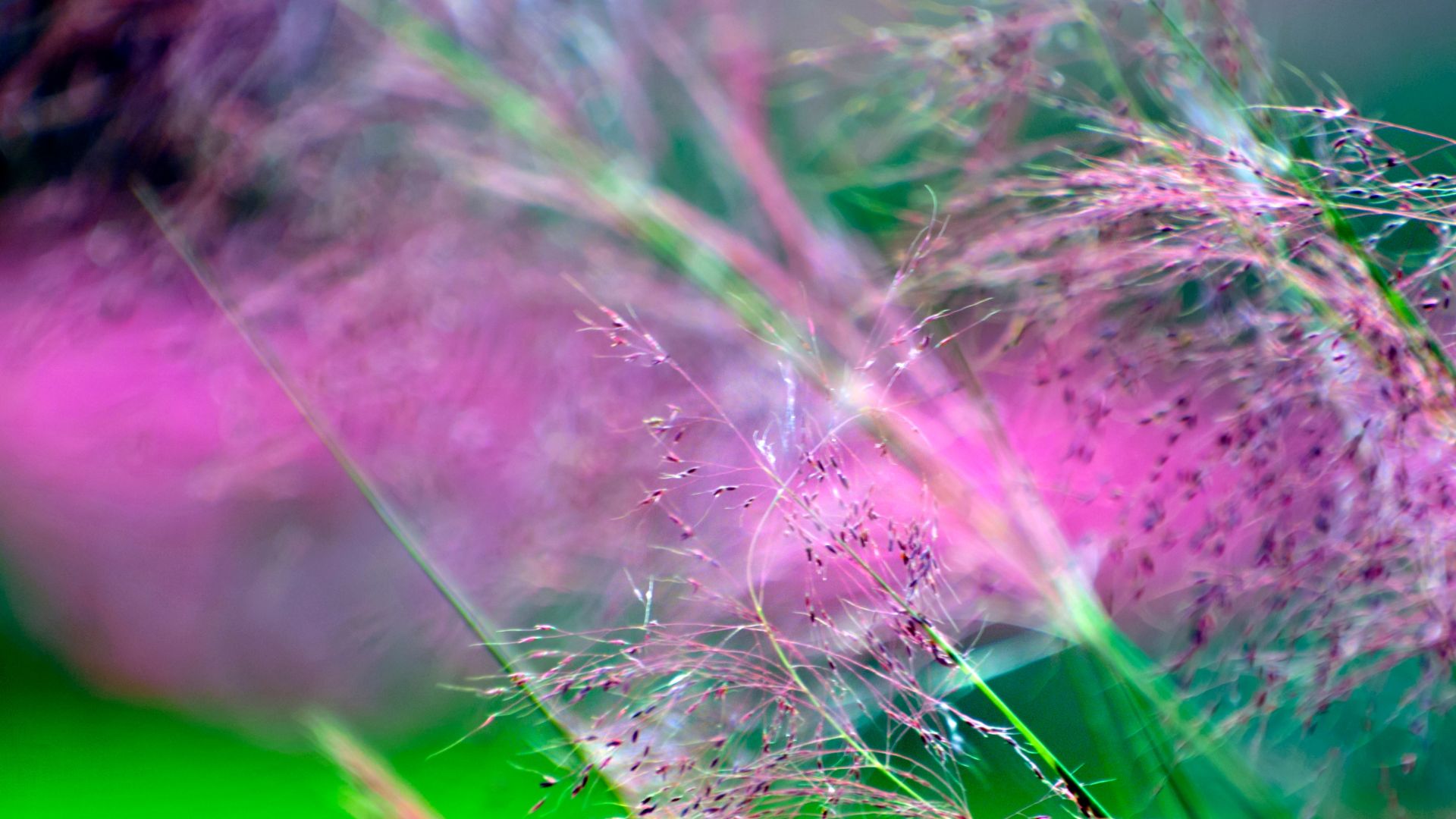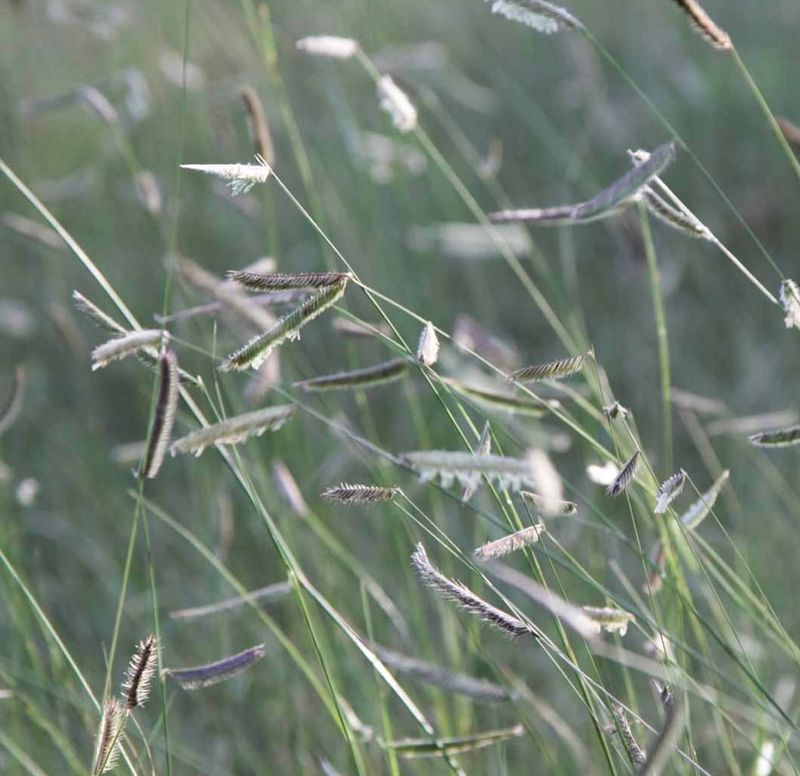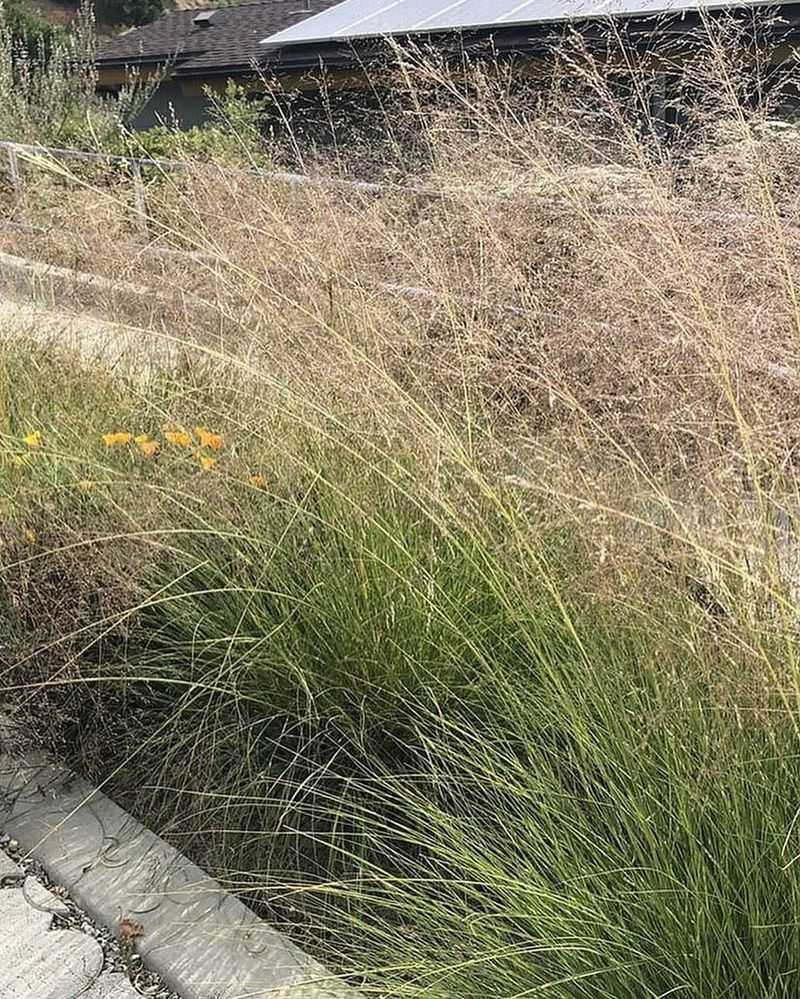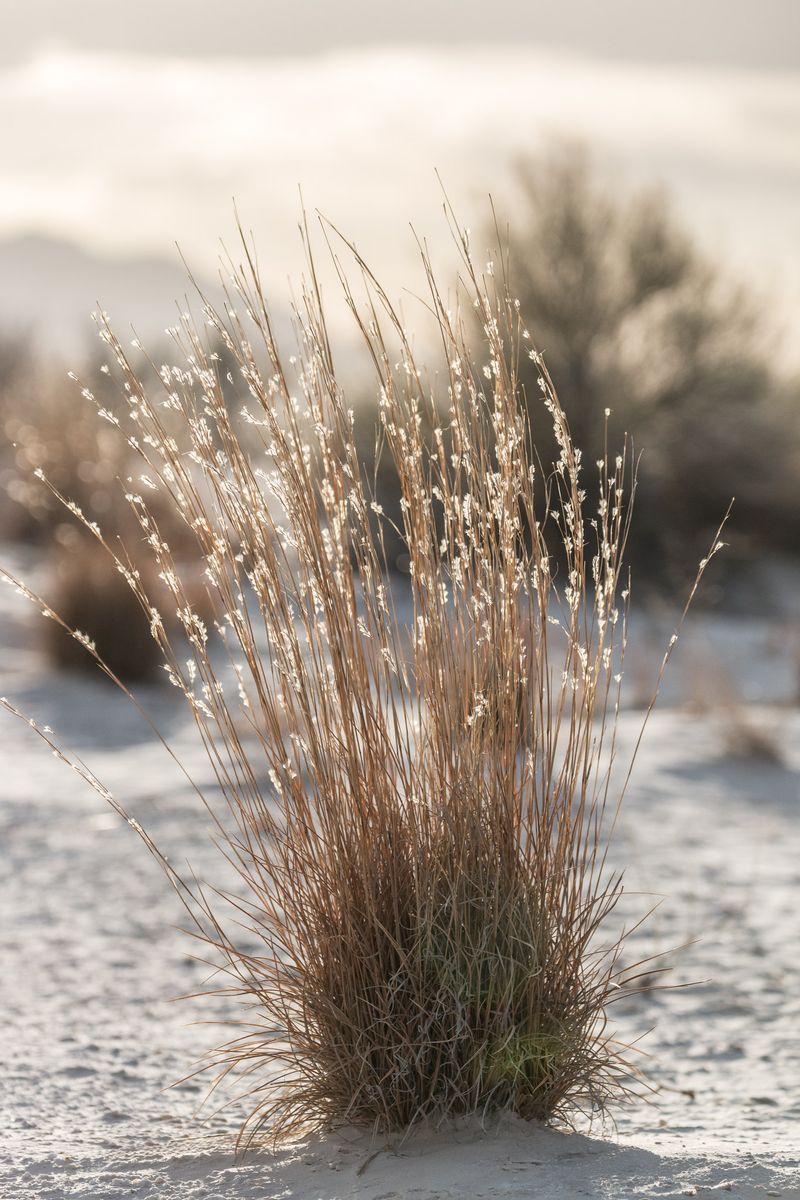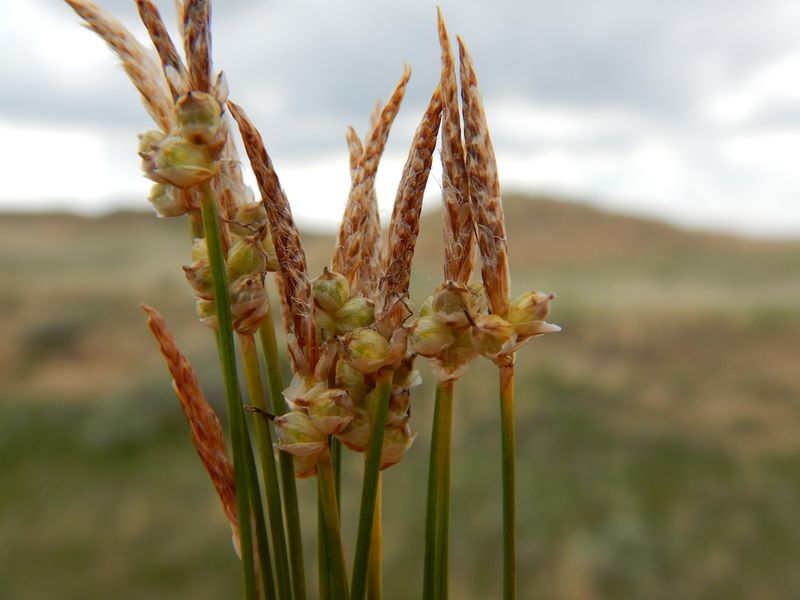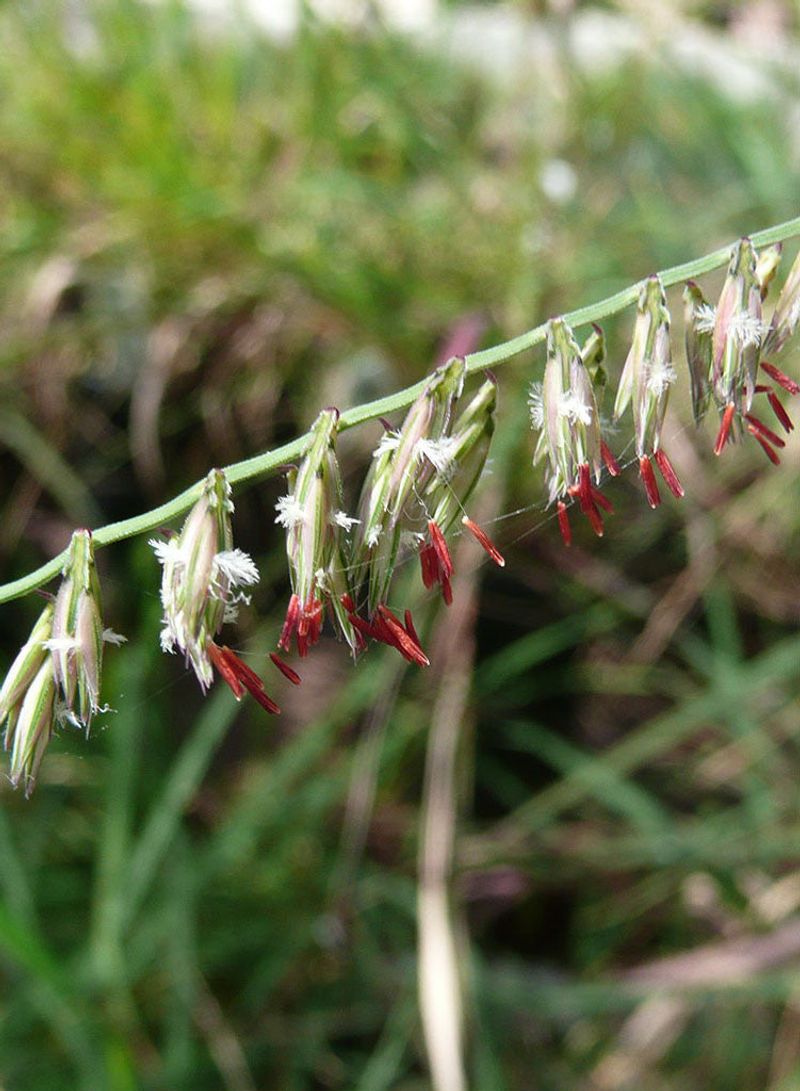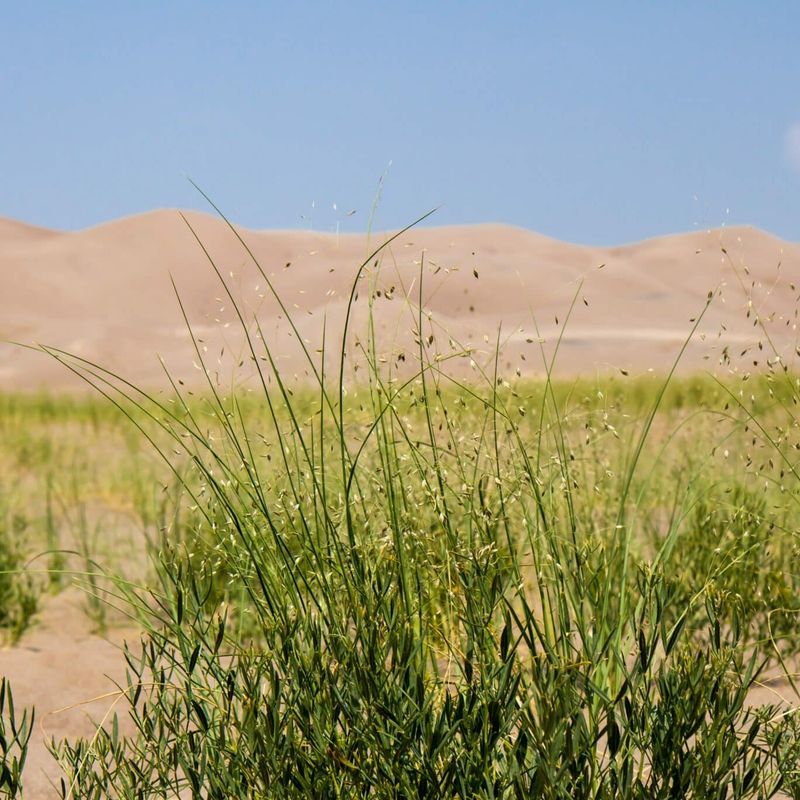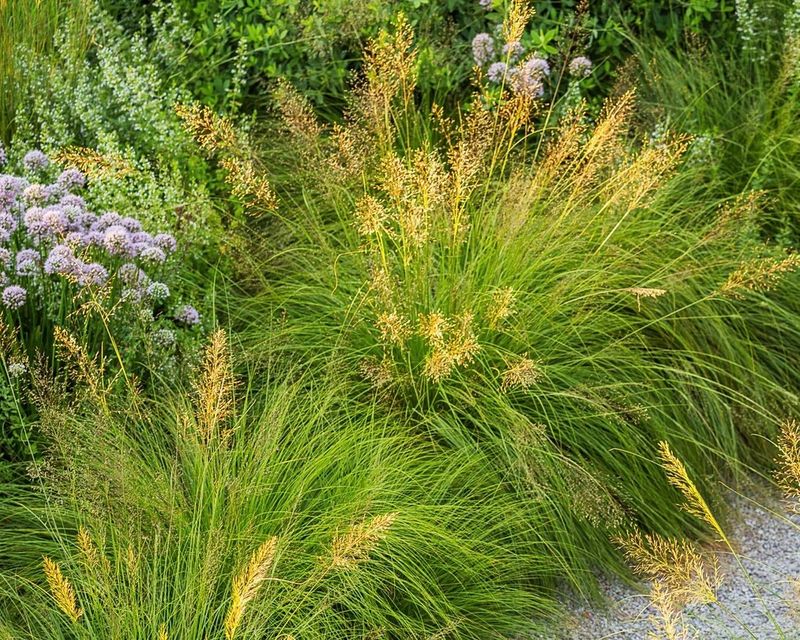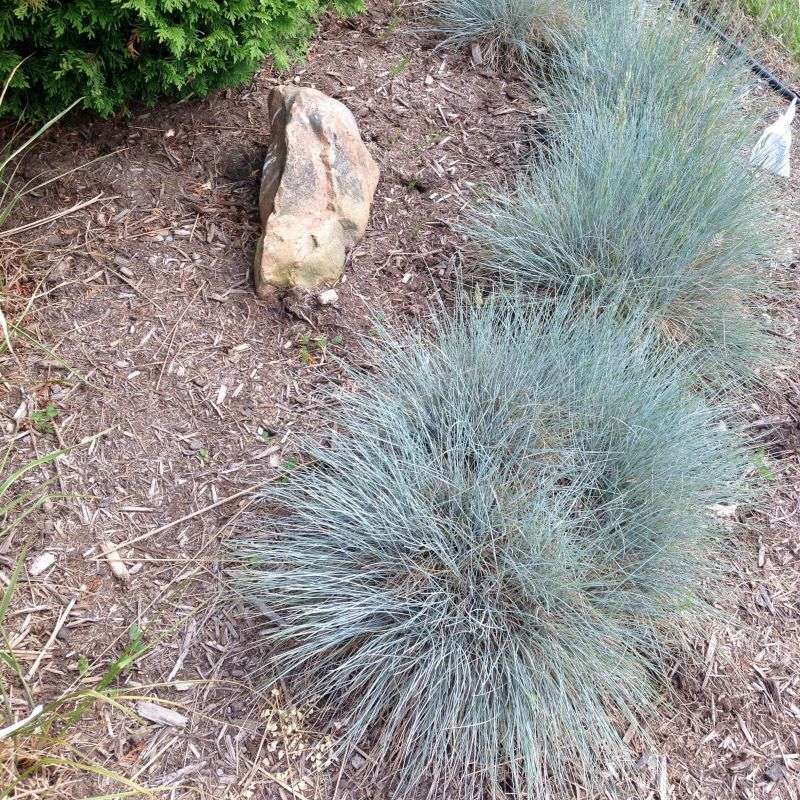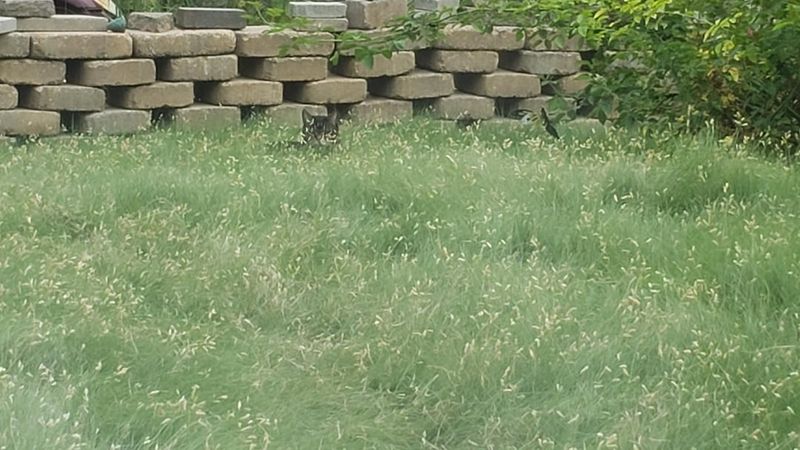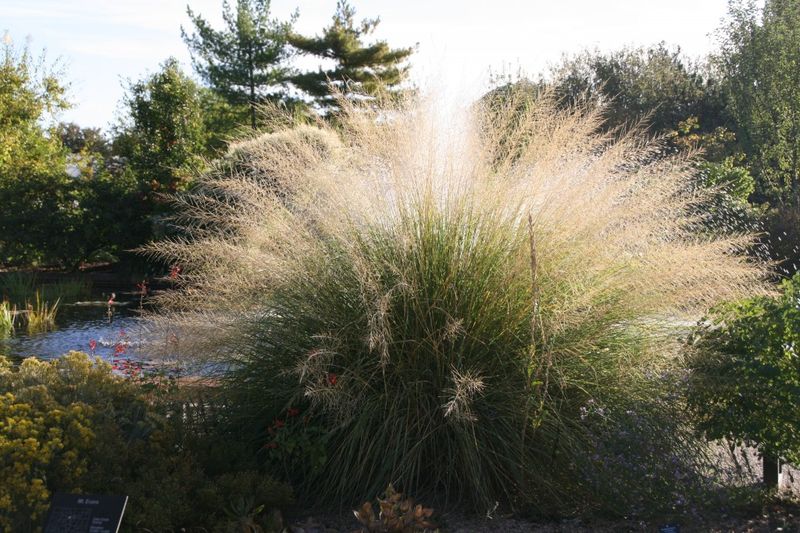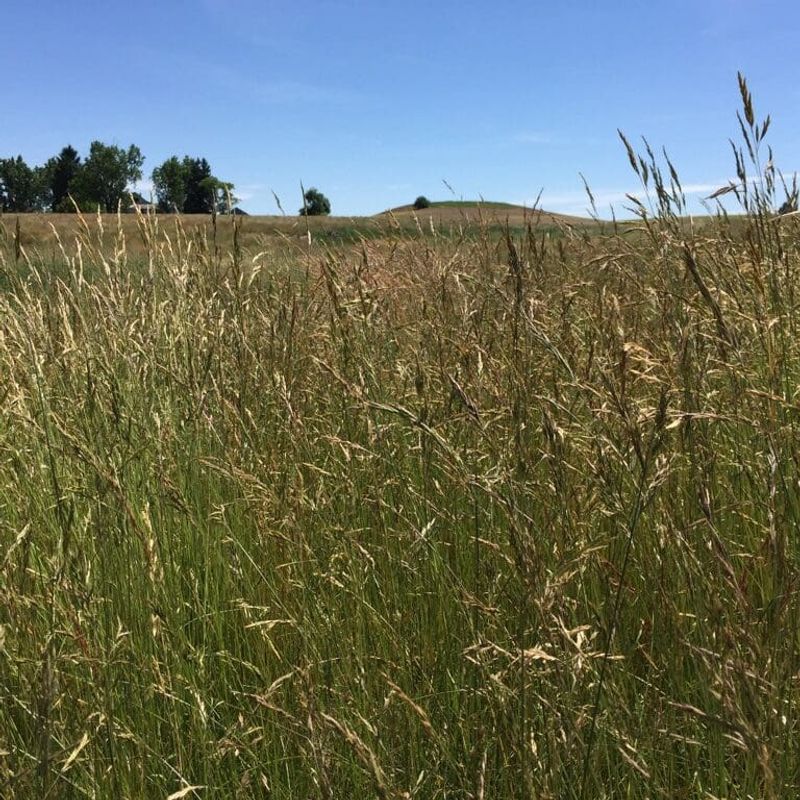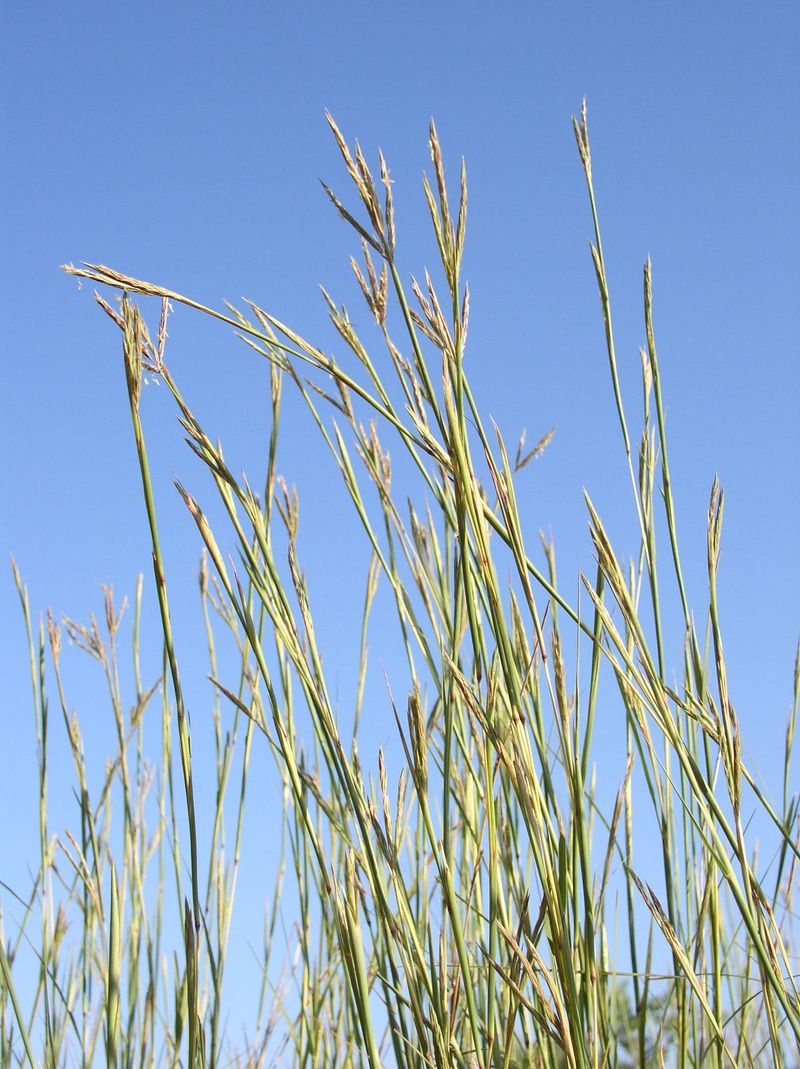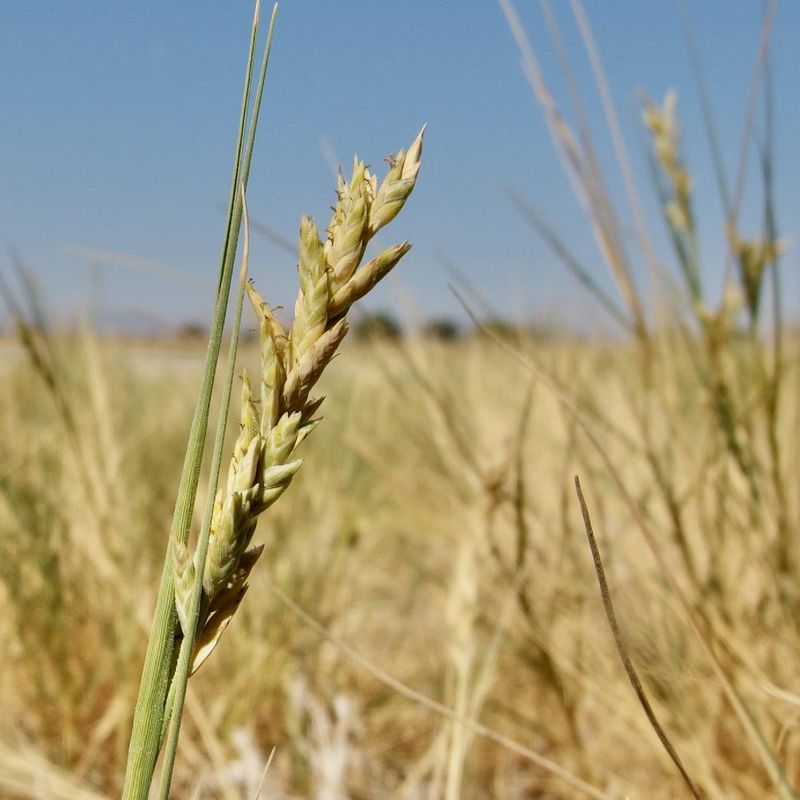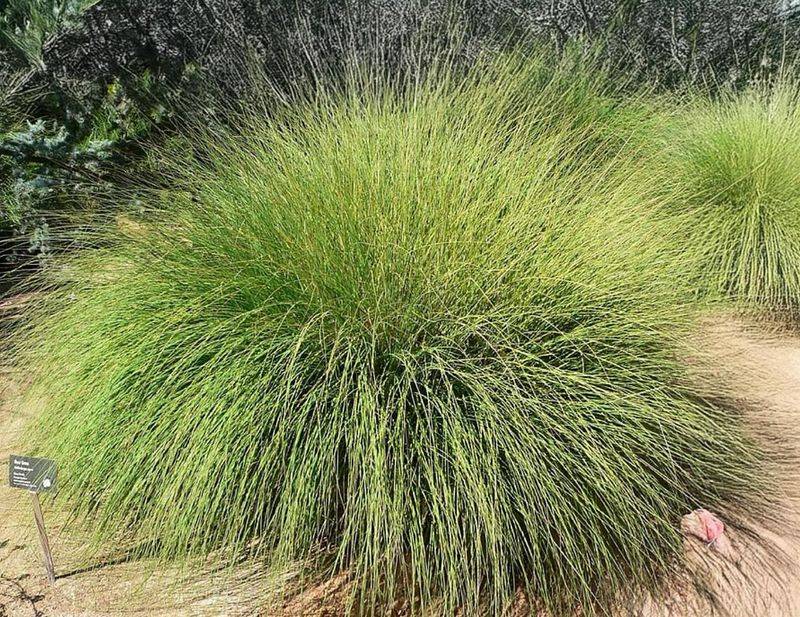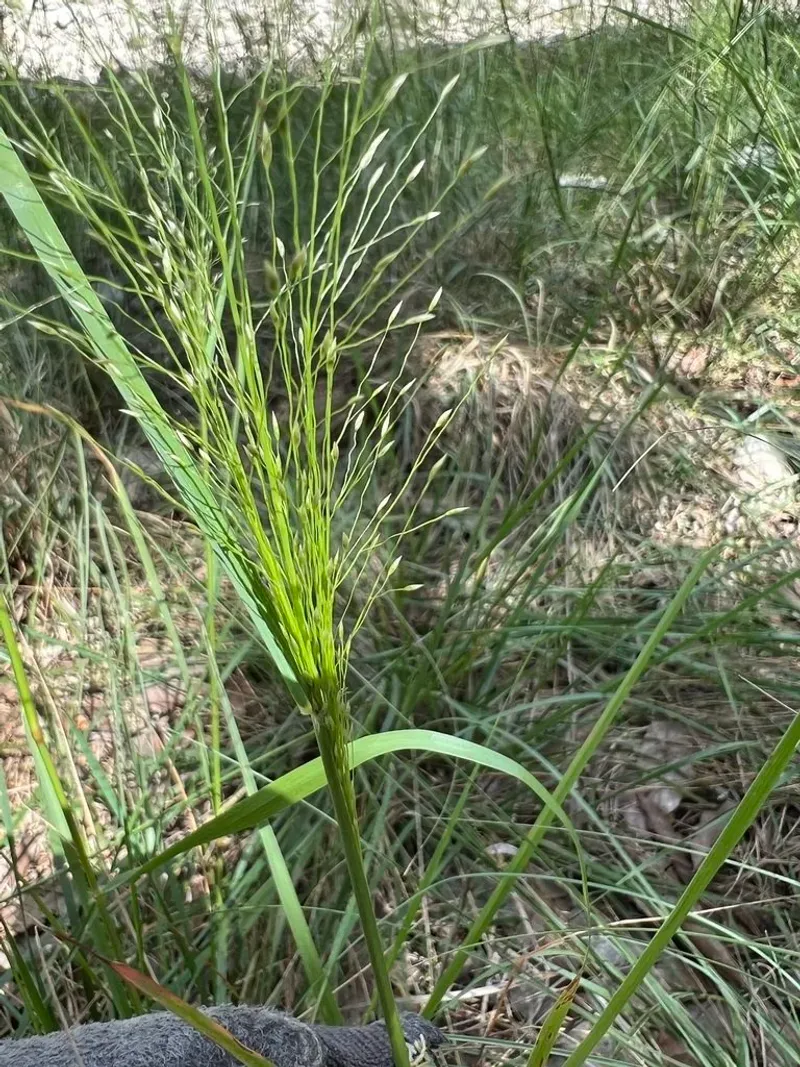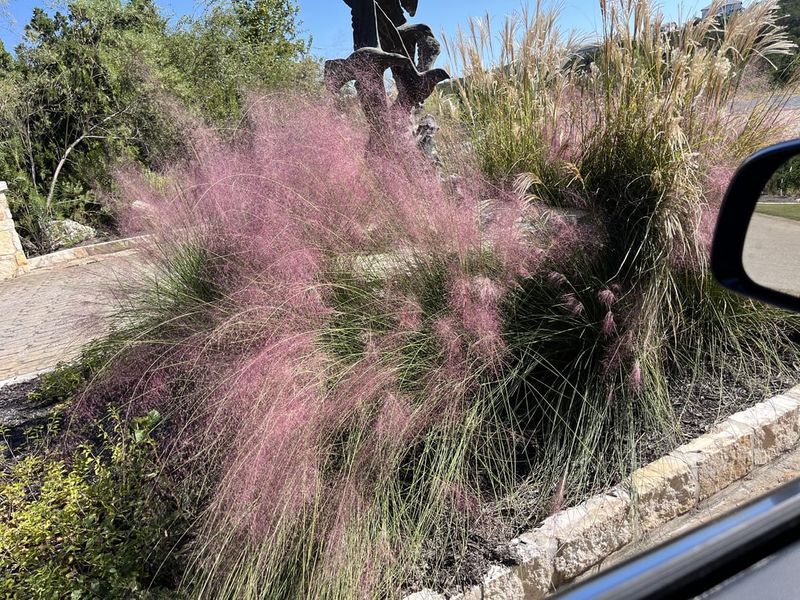Albuquerque homeowners face a distinct challenge: crafting outdoor spaces that shine in our hot, dry climate. But water-wise doesn’t mean dull—native grasses paired with minimalist Zen paths offer a stylish, sustainable solution. These designs honor New Mexico’s natural beauty while slashing water use.
In my own yard, I’ve tried several native grasses and found them surprisingly dynamic. They add texture, movement, and year-round charm with almost no upkeep. Paired with gravel or stone paths, they create a peaceful space that feels both modern and rooted in tradition.
Local nurseries are seeing a shift—more people are ditching thirsty lawns for native alternatives. These grasses are built for our climate and pair beautifully with clean, simple path designs. The result is a landscape that’s elegant, low-maintenance, and deeply connected to the Southwest.
1. Blue Grama For A Soft, Ground-Hugging Texture
This signature New Mexico grass creates a beautiful, low-growing carpet along path edges. Its distinctive eyelash-shaped seed heads dance just above the foliage, adding visual interest even in winter.
Many Albuquerque gardeners appreciate how blue grama’s fine-textured foliage softens hard landscape elements while requiring virtually no supplemental water once established. The grass’s natural growth habit means minimal maintenance throughout the year.
2. Alkali Sacaton Creates Dramatic Height Contrast
Rising gracefully to three feet tall, this native bunch grass makes a striking statement when positioned strategically along Zen pathways. The airy seed heads catch morning light beautifully, creating natural sculptures throughout your yard.
Alkali sacaton thrives in the challenging alkaline soils common to many Albuquerque neighborhoods. Its deep root system means it can access groundwater long after surface moisture has evaporated, making it exceptionally drought-resistant even by local standards.
3. Little Bluestem Adds Rich Autumn Colors
Summer’s blue-green foliage transforms into a stunning coppery-red display when temperatures drop, making little bluestem perfect for year-round interest. I planted several clumps along my meditation path and enjoy how they catch the low winter sunlight.
The upright form reaches about 2-3 feet tall and requires no pruning to maintain its attractive shape. Little bluestem’s adaptability to Albuquerque’s poor soils means it thrives where many ornamental grasses struggle, creating reliable structure in minimalist designs.
4. Threadleaf Sedge Provides Delicate Movement
Resembling fine green hair gently swaying in the breeze, this grass-like sedge brings subtle motion to still Zen spaces. The ultra-fine texture creates a fascinating contrast against smooth stones or gravel.
Despite its delicate appearance, threadleaf sedge handles Albuquerque’s harsh conditions remarkably well. Many local designers use it to soften path transitions or create living mulch beneath taller structural plants.
5. Side-Oats Grama With Distinctive Seed Heads
Charming seed heads dangle like tiny flags from one side of the stem, creating an instantly recognizable silhouette unique among native grasses. This medium-height grass (1-2 feet) transitions beautifully between taller background plants and lower path-hugging species.
Side-oats grama’s bluish-green foliage turns golden tan in winter, maintaining visual interest throughout Albuquerque’s mild cold season. The plant’s historical significance as New Mexico’s state grass makes it an authentic choice for locally-inspired landscapes.
6. Indian Ricegrass Sparkles After Morning Dew
Early risers in Albuquerque appreciate how dewdrops cling to the delicate seed heads of Indian ricegrass, creating a magical, sparkling effect along morning walking paths. This medium-sized bunch grass (1-2 feet tall) maintains an elegant vase shape year-round.
Historical significance adds another dimension – indigenous peoples harvested its nutritious seeds for thousands of years. The plant’s ability to stabilize soil makes it particularly valuable on slopes or areas prone to erosion in our sometimes intense summer storms.
7. Prairie Dropseed Offers Subtle Fragrance
Few grasses engage the sense of smell, but prairie dropseed’s seed heads release a distinct fragrance often compared to fresh popcorn or cilantro. This unexpected sensory element enhances the meditative experience of walking a Zen path.
The fountain-like growth habit forms perfect 2-foot rounded mounds that maintain their shape through winter. Albuquerque gardeners appreciate how prairie dropseed’s fine-textured leaves catch morning and evening light, creating a luminous effect that shifts throughout the day.
8. New Mexico Fescue Creates Cool Blue Accents
Silvery-blue foliage stands out beautifully against warm-toned gravel or sandstone paths common in Albuquerque landscapes. This compact native (about 12 inches tall) forms neat, tidy mounds that never require cutting back.
Cool-season growth means New Mexico fescue looks fresh and vibrant during spring and fall, perfectly complementing warm-season grasses that peak in summer. Several Albuquerque public gardens showcase this grass in their water-wise demonstration areas, proving its adaptability to our challenging climate.
9. Buffalograss Creates Natural Lawn Alternatives
Native to the Great Plains, this incredibly drought-tolerant grass forms a soft, walkable surface that can replace traditional lawns or fill spaces between stepping stones. Unlike most ornamental grasses, buffalograss spreads by stolons to create a connected ground cover.
Female plants produce interesting seed heads that add texture without appearing weedy or unkempt. Albuquerque’s water conservation programs often recommend buffalograss as our most sustainable lawn alternative, requiring up to 80% less water than conventional turf.
10. Giant Sacaton Creates Dramatic Vertical Elements
Reaching an impressive 4-6 feet tall, giant sacaton serves as a stunning architectural element in minimalist Albuquerque landscapes. The massive seed plumes catch afternoon light, creating golden halos that seem to float above the garden.
Strategic placement is key – I’ve seen this grass used effectively as a living screen or to mark transitions between different garden zones. Despite its size, giant sacaton’s root system makes it remarkably drought-resistant once established, thriving with minimal supplemental irrigation even during our driest months.
11. Galleta Grass Thrives In Harsh Conditions
When other plants surrender to Albuquerque’s challenging environment, galleta grass perseveres. This tough native has evolved to handle poor soils, intense sun, and minimal rainfall – perfect for low-maintenance path borders that don’t need coddling.
The distinctive curly leaves and unusual seed heads create interesting textural elements year-round. Local wildlife benefit too – galleta provides valuable food and shelter for native birds that visit Albuquerque yards, adding ecological value to your Zen garden design.
12. Sand Bluestem Dances In Albuquerque Breezes
Tall, graceful stems topped with fluffy seed heads move continuously in even the gentlest breeze, adding kinetic energy to otherwise still Zen gardens. The silvery-blue color shifts throughout the seasons, culminating in rich copper tones that persist through winter.
Growing to 3-5 feet, sand bluestem makes an excellent backdrop for meditation paths or seating areas. The plant’s deep roots – sometimes extending 6 feet underground – allow it to access moisture far below the surface, explaining why it remains lush when other landscape plants struggle during Albuquerque’s driest periods.
13. Inland Saltgrass Masters Challenging Soils
Struggling with salty or alkaline soil common in parts of Albuquerque? Inland saltgrass evolved specifically for these challenging conditions. This low-growing grass forms a dense mat that effectively suppresses weeds while requiring almost no maintenance.
The fine texture and soft green color create a pleasing contrast against gravel or decomposed granite paths. Several municipal projects around Albuquerque now use inland saltgrass for roadside plantings, demonstrating its remarkable tolerance for poor conditions while maintaining an attractive appearance.
14. Deergrass Forms Perfect Rounded Mounds
Sculptural perfection comes naturally to deergrass, with its symmetrical, fountain-like form creating living sculptures along Zen pathways. The arching blades form dense, rounded mounds about 3 feet tall and wide, maintaining their shape throughout the seasons.
Airy flower stalks rise above the foliage in late summer, creating another dimension of visual interest. Several Albuquerque parks and public spaces feature deergrass in their water-wise demonstration gardens, showcasing how this adaptable native thrives with minimal irrigation while providing year-round structure.
15. Plains Lovegrass Brings Airy Elegance
Delicate and refined, the cloud-like seed heads of plains lovegrass create an ethereal quality perfect for contemplative garden spaces. Despite its fine texture, this native grass handles Albuquerque’s harsh conditions with surprising resilience.
Growing to about 2 feet tall, plains lovegrass works beautifully as a transition between taller background plants and lower groundcovers. The bluish-green color provides a cool counterpoint to warmer-toned hardscape elements commonly used in Albuquerque Zen gardens, creating pleasing visual harmony throughout the landscape.
16. Desert Muhly Creates Pink Cloud Effects
Spectacular pink seed heads emerge in fall, transforming this unassuming grass into a showstopper that seems to float like cotton candy above the landscape. The effect is especially dramatic when planted in groups along Zen paths where the low-angle autumn sunlight can shine through.
Growing about 2-3 feet tall and wide, desert muhly maintains an attractive blue-green color during summer months. Several Albuquerque botanical gardens feature this grass prominently in their collections, demonstrating its perfect adaptation to our unique growing conditions.

